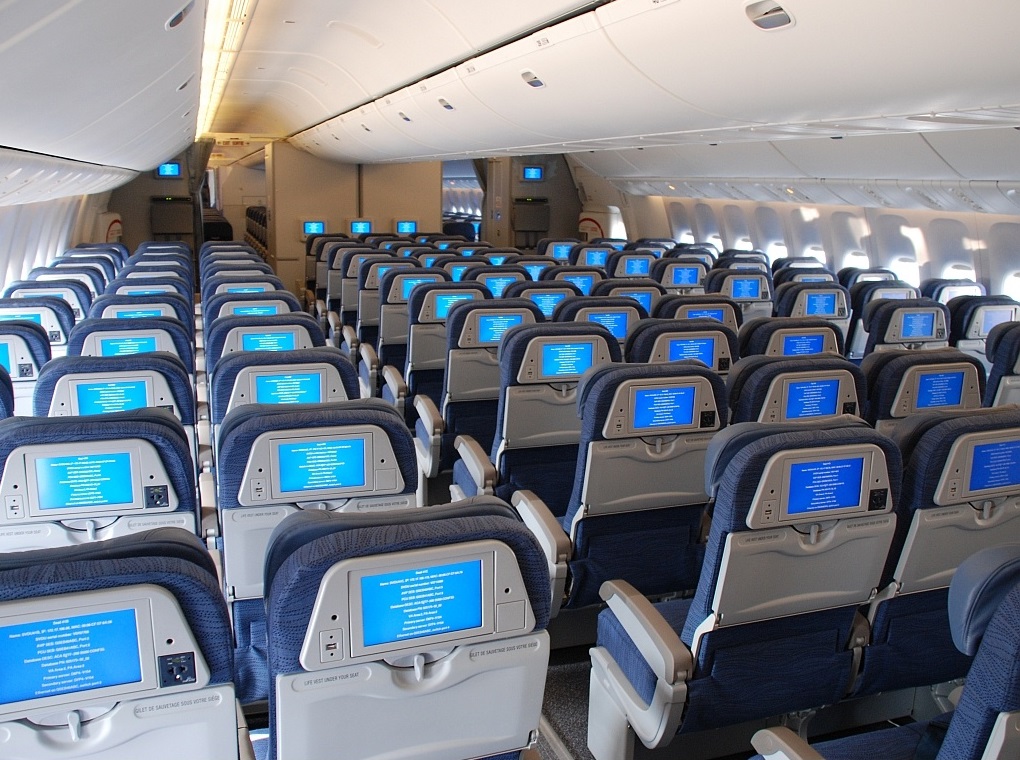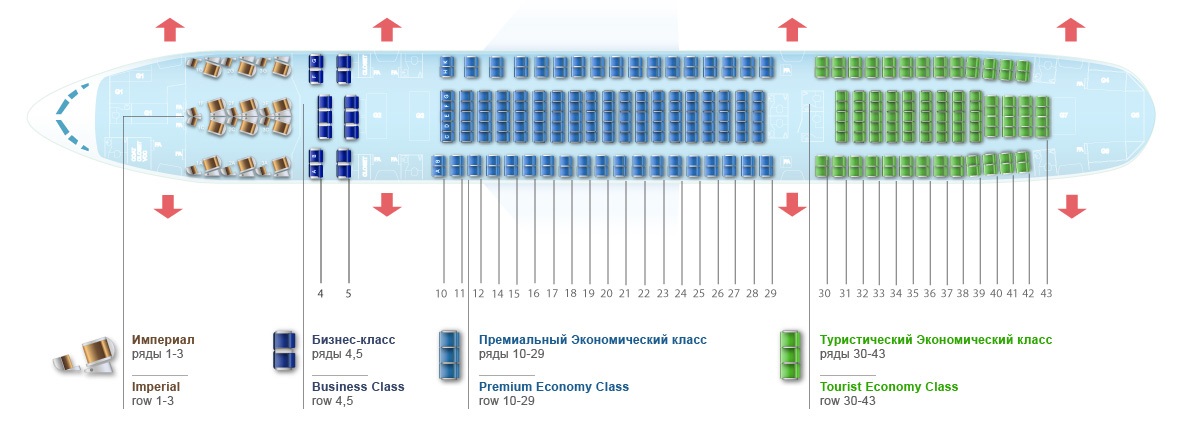Boeing 777. Photo. Video. Salon scheme. Characteristics. Reviews
The Boeing 777 is a long-range twin-engine airliner with a wide body. The aircraft has more than three hundred passenger seats and, depending on the modification, can fly from 9695 kilometers to 21560 kilometers. Its characteristic feature is the presence of jet engines with the largest diameter in the world. It's about 3.5 meters. Prior to the construction of the aircraft, consultations were held with eight leading air carriers. The first meeting of the group took place in January 1990. It includes such airlines as: Japan Airlines, American Airlines, British Airways, Cathay Pacific Airways, Delta Airlines, All Nippon Airways, Qantas United Airlines.
Boeing 777 photo
The Boeing 777 was designed to replace the previous generation of wide-body aircraft, and also to fill the gap between the Boeing 767 and Boeing 747 models. It is one of the first aircraft from the Boeing aircraft manufacturer to be equipped with a Fly by Wire digital control system. It is also the first commercial passenger aircraft developed using computer technology. Individual components of the aircraft were developed using 3D CAD CATIA software developed by IBM and Dassault Systemes.
On October 14, 1990, United Airlines placed its first order for 34 Boeing 777s worth $11 billion. On January 4, 1993, the first "triple sevens" began to be produced. And on April 9, 1994, the first Boeing 777 was produced with serial number WA001. The first flight took place on June 12 of the same year. Test flights were carried out for the next eleven months. Nine aircraft were tested in different climatic conditions from the arid deserts at Edwards Air Force Base in California to the cold Alaska. On April 19, 1995, after passing all the tests, the Boeing 777 received a certificate of airworthiness from the Federal Flight Administration (FAA) and from the Joint Aviation Administration (JAA).
Boeing 777 interior photo

The Boeing 777 is available in two lengths. The base model 777-200, which is 63.7 meters long, entered service with United Airlines in 1995. After two years, a model with an extended flight radius was released - 777-200ER (Extended Range). For the first time this model entered service with British Airways. The second version of the Boeing 777 is the 777-300. It is 10.1 meters longer than the 777-200 model and can accommodate up to 550 passenger seats. This version has been flying since 1998.
Boeing 777 interior layout

In 2004, a version was released - 777-300ER. This version allowed longer flights than the 777-300. And in 2006, the airline downgraded the Boeing 777-200LR (Longer Range). At this time, he became a passenger liner with the longest range. This model was called "Worldliner". And since 2009, the cargo Boeing 777F (Freighter) began to fly. Models 777F, 777-300ER and 777-200LR are equipped with General Electric GE90-115B engines. Also, to reduce fuel consumption, the curved wingtips have become slightly larger. All other models are equipped with GE90, Pratt & Whitney PW4000 or Rolls-Royce Trent-800 engines. The cockpit is equipped with multifunctional Honeywell LCD screens. The wings are angled at 31.6 degrees for an optimum cruising speed of Mach 0.83. Each 777-300ER tire from the main landing gear can carry a load of almost 27 tons. There is also a modification for the Air Force. This is a KS-777 model used as an air tanker.
After 2000, the Boeing 777 became the best-selling model of the eponymous manufacturer. The most common variant purchased by airlines is the 777-200ER.
Features Boeing 777-300ER (777-200ER) :
- Length: 73.9 m (63.7 m)
- Height: 18.7 m.
- Wingspan: 64.81 m.
- Empty weight: 166881 kg. (142900 kg.)
- Cruise speed: 910 km/h
- Maximum speed: 955 km/h
- Flight range: 10200 km. (10745 km.)
- Fuselage diameter: 6.20 m.
- Ceiling: 13100 m.
- Number of passenger seats: 301-550 seats.
- Crew: 2 people
Boeing 777. Gallery.
